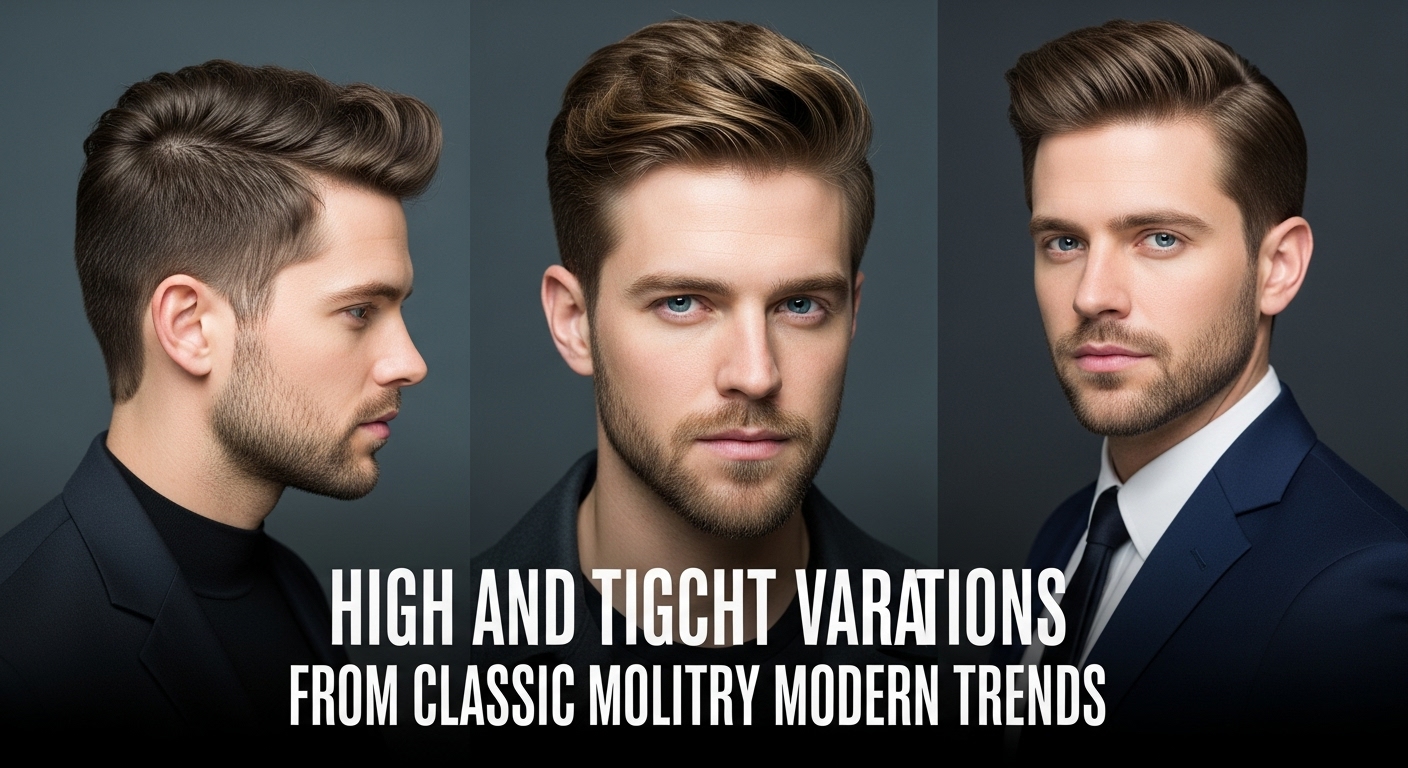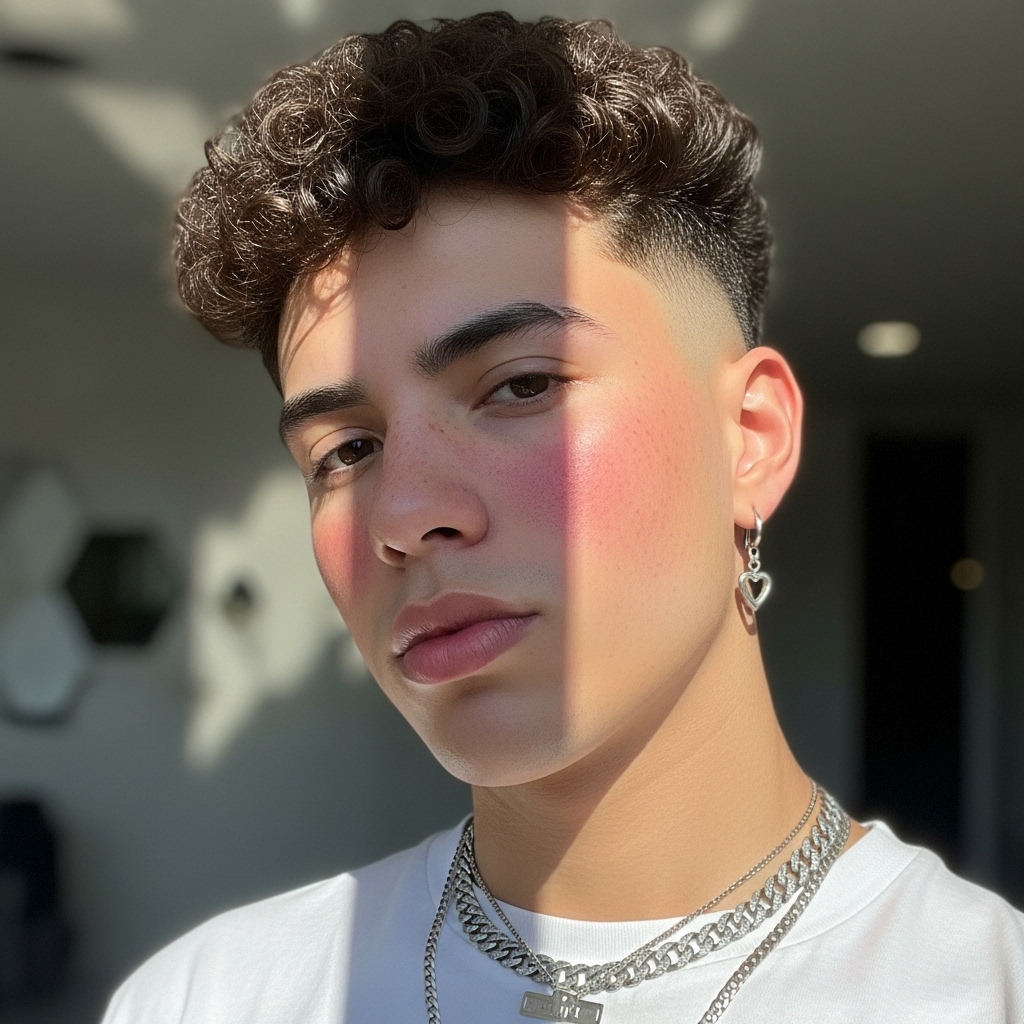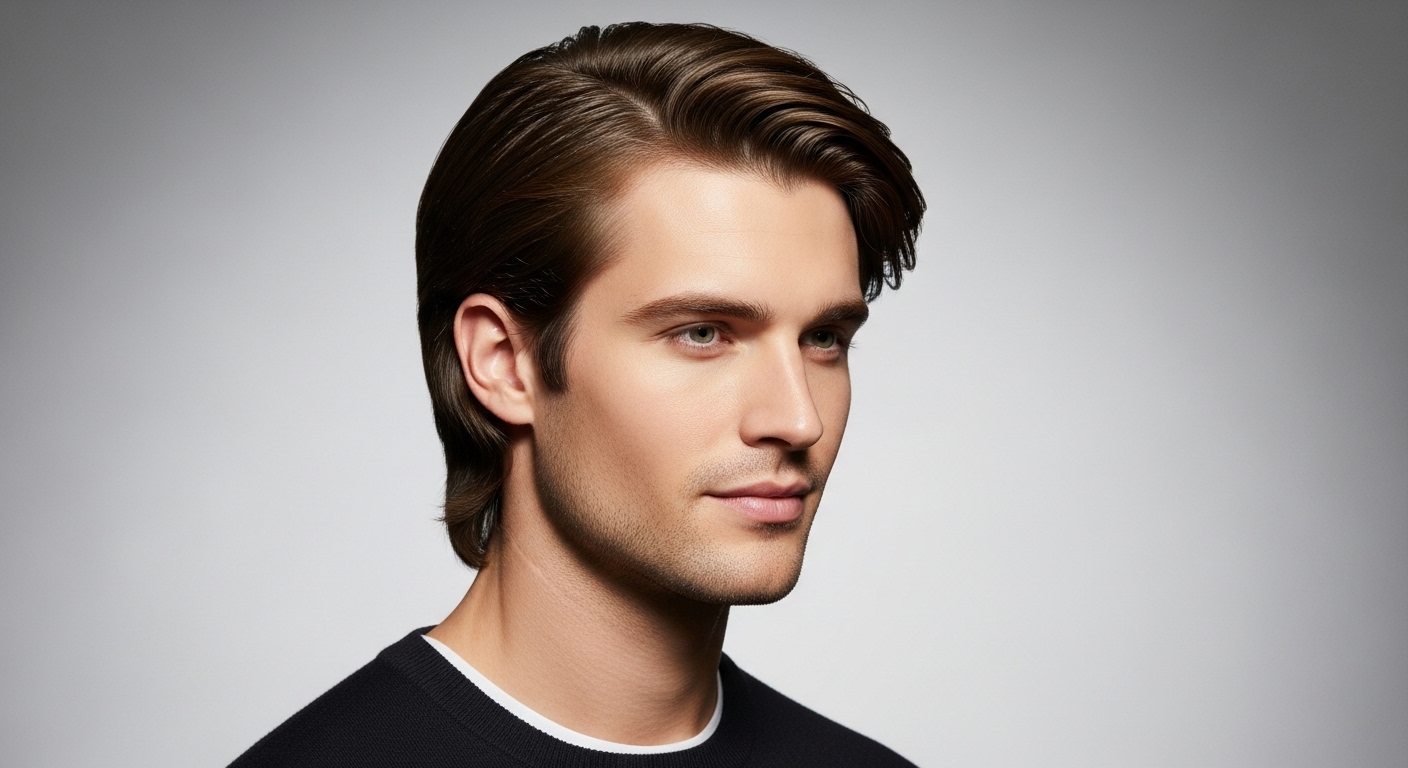The high and tight cut. A look that is quite familiar but you might not have recognized it. Military barracks. 80s action movies. Your friend who always says it makes his mornings quicker. It’s very neat, with the sides reduced to the skin and the top cut short. It gives off a vibe of being organized but with almost no hassle. For that haircut, it was not one appearance only. It has been a few years since it has grown apart from a single one and created several versions, each with peculiar characteristics. All of them were not that different and some even had similarities with the traditional style of the United States Marines and Army soldiers.
Anyway, there are numerous differences regarding these styles – some of them having different barbering techniques as well as faded edges or textured tops, and even having faces fitted with beards. This is the point where things become more intriguing– initially, it was purely uniform countertop that facilitated the worker’s individualistic traits.
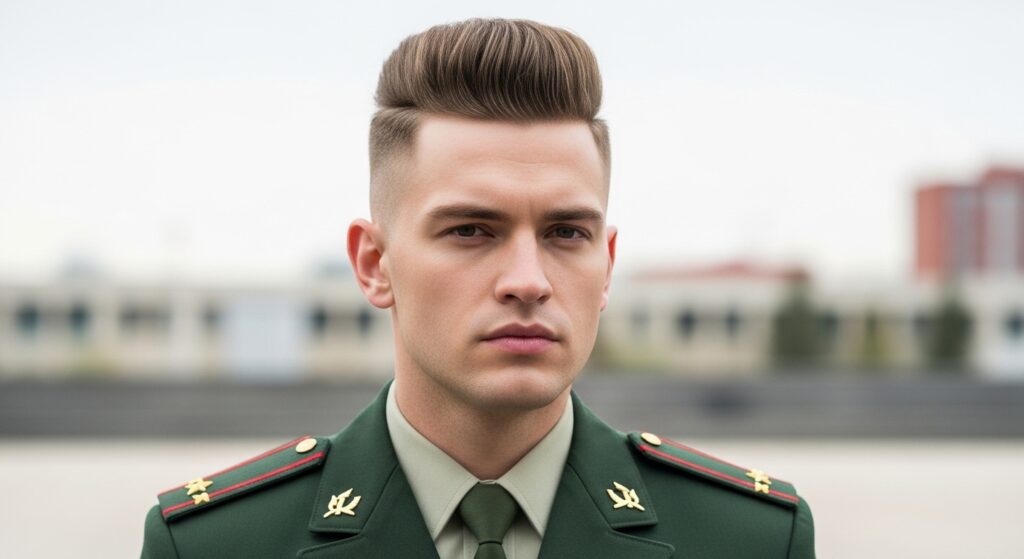
Where the High and Tight Began
The origin of the haircut? Purely military. Short sides made hygiene easier in tough conditions, and the cropped top helped helmets fit properly. Over time, it also came to symbolize discipline and unity—yet today, styles like the ice cream haircut show how far military cuts have influenced modern fashion.
However, by the 20th century the style was simply used to represent toughness. Drill sergeants. Boxers. Guys who didn’t have time to play with their hair. You can still feel the presence of the style, even if you see it on some guy who is just passing by in the middle of the city.
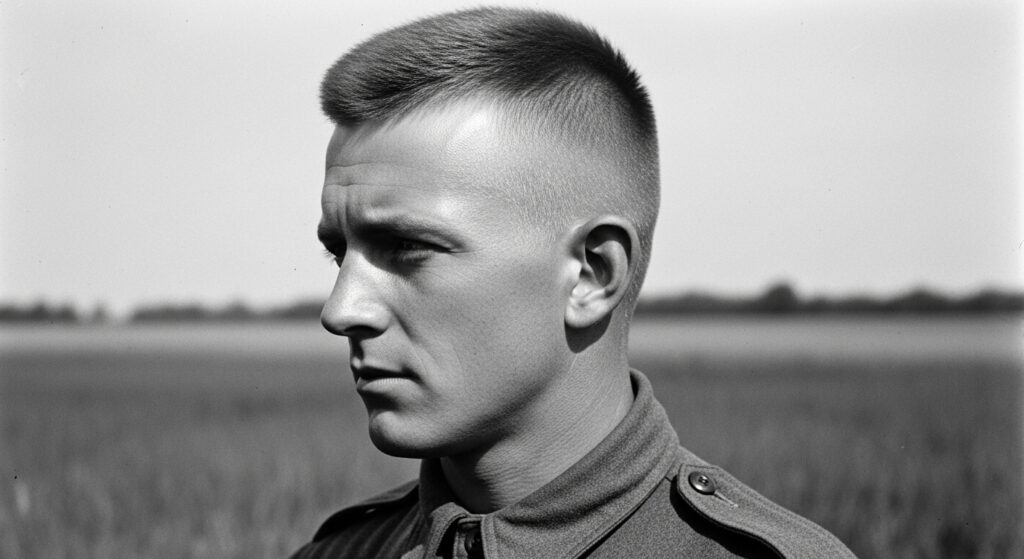
Classic High and Tight
The old-fashioned version is more loyal to the rulebook than it is with anything else: sides either shaved or clipped, top, no blending, slightly longer. What really gives it that almost severe edge is that sharp line.
The servicemen are the ones who usually wear this haircut, but you can also notice it on those men who want a hairstyle with a loud low maintenance statement. No need for a comb or styling gel. Get up, rinse, you’re good to go.
Modern Takes on the High and Tight
That is actually the beginning of barbers’ having fun with the haircut. The core idea remains the same, only changes apply universally.
High and Tight Fade
The fade instead of that harsh separation characterizes the smooth transition. The low fade, mid fade, and high fade do not only differ in technical terms but each also alters the haircut to give you a different mood.
You don’t really feel like you’ve gone to a drill camp but rather you are walking on the streets with your trendy outfit.
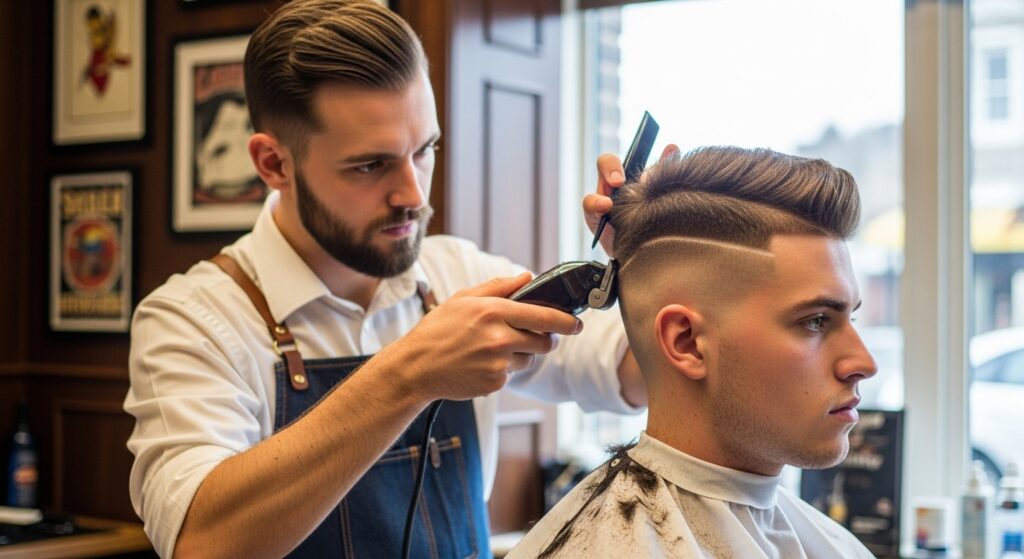
High and Tight with Textured Top
Make the top just long enough for it to be touchable. Put texture on it using scissors and maybe a little matte styling paste. It looks very modern and casual but less the rigidity is felt. The guys that are seeking the sharp side but at the same time are not in love with the “military only” vibe will get a lot out of this style.
Skin Fade with Beard Pairing
One of the most popular things that people change: the high and tight combined with a beard. The clean-shaven sides and the full beard are the things that make the contrast. It looks quite rugged but still clean.
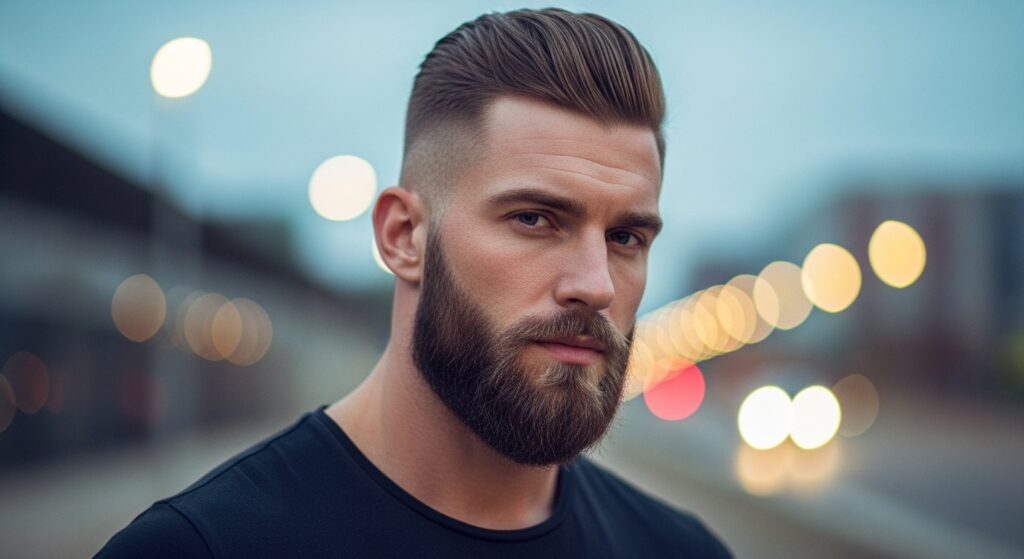
Comparison Table of Variations
| Style | Key Features | Best For | Maintenance |
|---|---|---|---|
| Classic High and Tight | Shaved sides, cropped top, no blend | Military-inspired look | Minimal, every 2–3 weeks |
| High and Tight Fade | Blended sides, gradual fade | Modern street style | Moderate, needs touch-ups |
| Textured Top | Longer top with layers | Casual or trendy vibe | Styling product required |
| Skin Fade + Beard | Sharp fade, beard contrast | Rugged and stylish combo | Beard upkeep + trims |
Who Pulls It Off Best?
The truth is anyone can do it. Round faces, square jaws, strong cheekbones – these are features that change their appearance with this cut. Guys experiencing hair loss often like it because the short length covers the patchy areas. Moreover, if you are the type that loves soft and flowy hair, then this is not the right one for you.

Everyday Life with the Cut
It’s a low-maintenance style, but not zero effort. The sharp edges need more frequent trims than medium-length cuts. Skip them too long, and it might even start to look like one of those unprofessional hairstyles.
Maybe every two or three weeks, unless you are okay with it growing out in an uneven way. And if you get textured tops, you will be using matte paste or powder to style.
That is the tradeoff: classic = fewer products, modern = more styling but also more personality.
Final thoughts
At first, the high and tight haircut was a strictly defined style. At present, it is the whole range of variations, from austere military to trendy Instagram barber shop.
No matter whether you do it in a simple way or combine it with fades, texture, or beard, it still remains one of the most versatile short cuts.
Moreover, as with most haircuts, it is about the feeling that you have when you see yourself in the mirror.
FAQs
1. Is a high and tight haircut good for thinning hair?
Absolutely, that way the contrast between bald spots and the short sides is minimized and the overall look is even.
2. How often should I get a high and tight trimmed?
The average time is every 2–3 weeks so that the edges are always sharp.
3. What is the difference between a high and tight and a fade?
In a high and tight, the separation is very sharp, whereas in a fade the sides are gradually blended.
4. Can I style the top of a high and tight haircut?
Of course. The modern versions generally add texture, spikes, or messy volume.
5. Is the high and tight haircut compatible with any face shape?
Nearly all, although it particularly complements the geometrical and the ovals by highlighting the shape of the face.
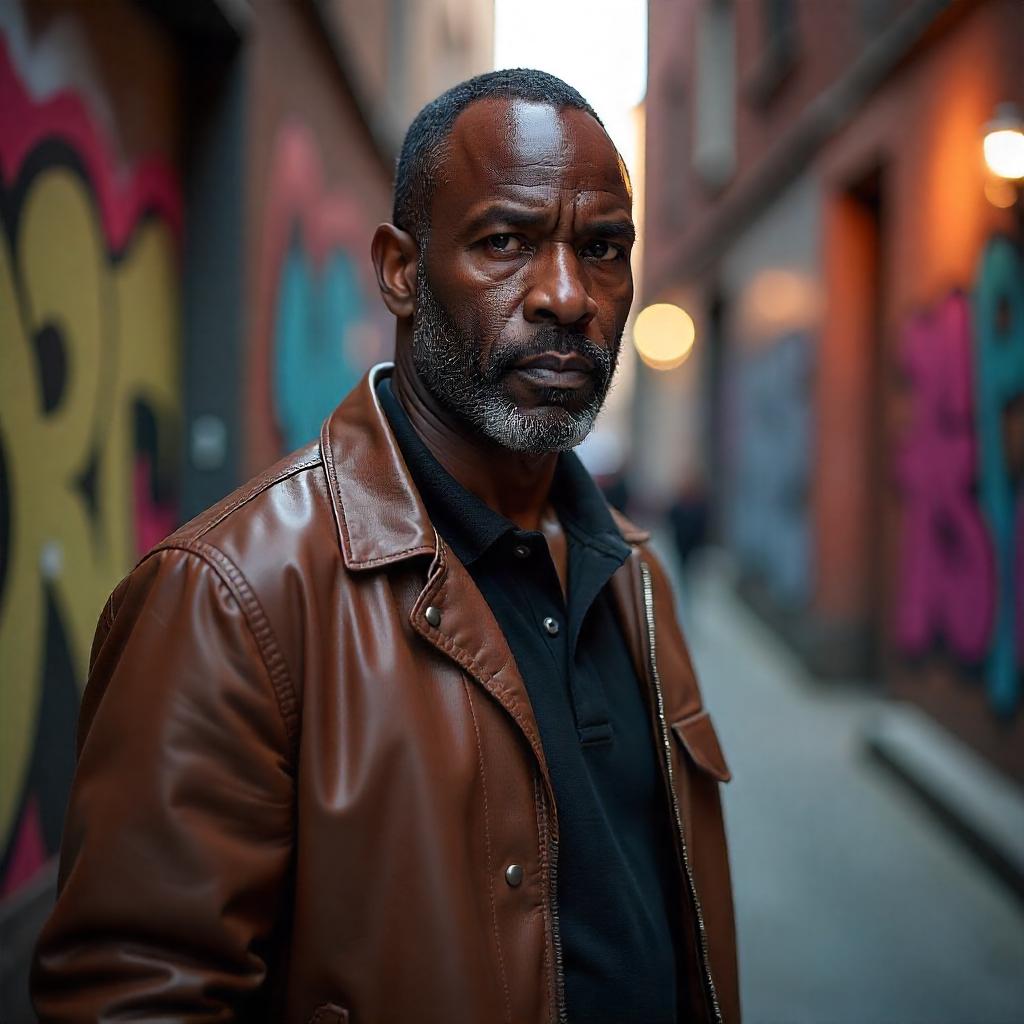
Alex Carey writes about men’s and women’s hairstyles, blending fashion insight with easy-to-follow haircare routines for every hair type. With a keen eye on seasonal trends, Alex helps readers stay updated on what’s hot and what’s not. From daily care tips to complete style makeovers, Alex covers it all.

